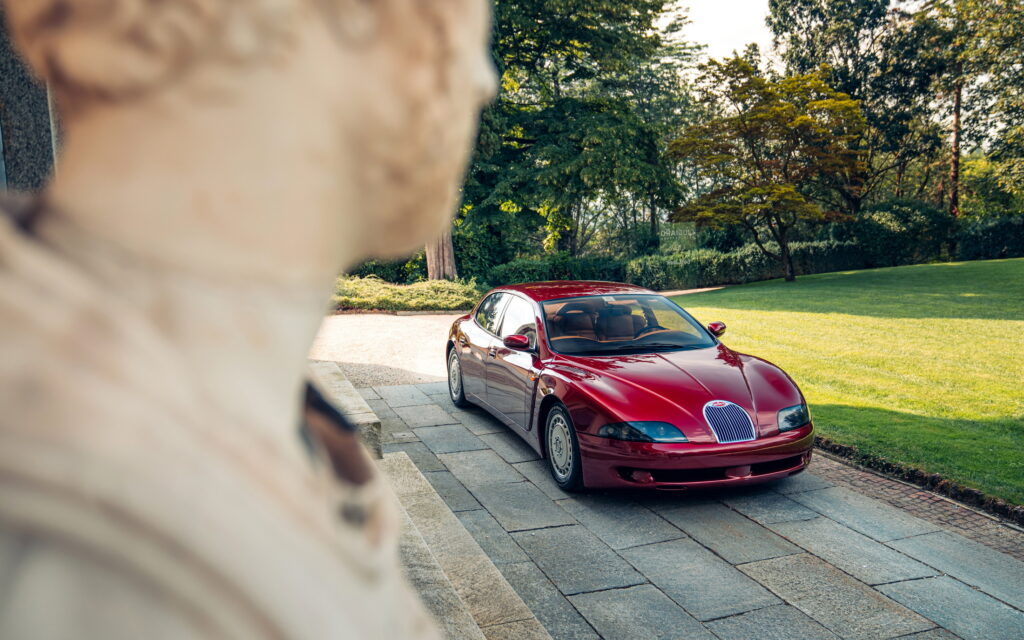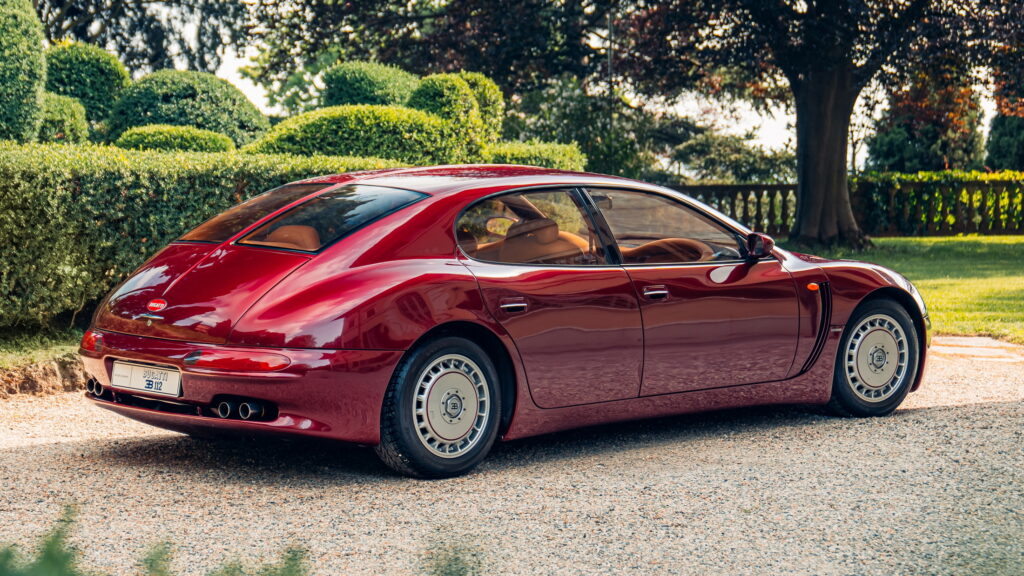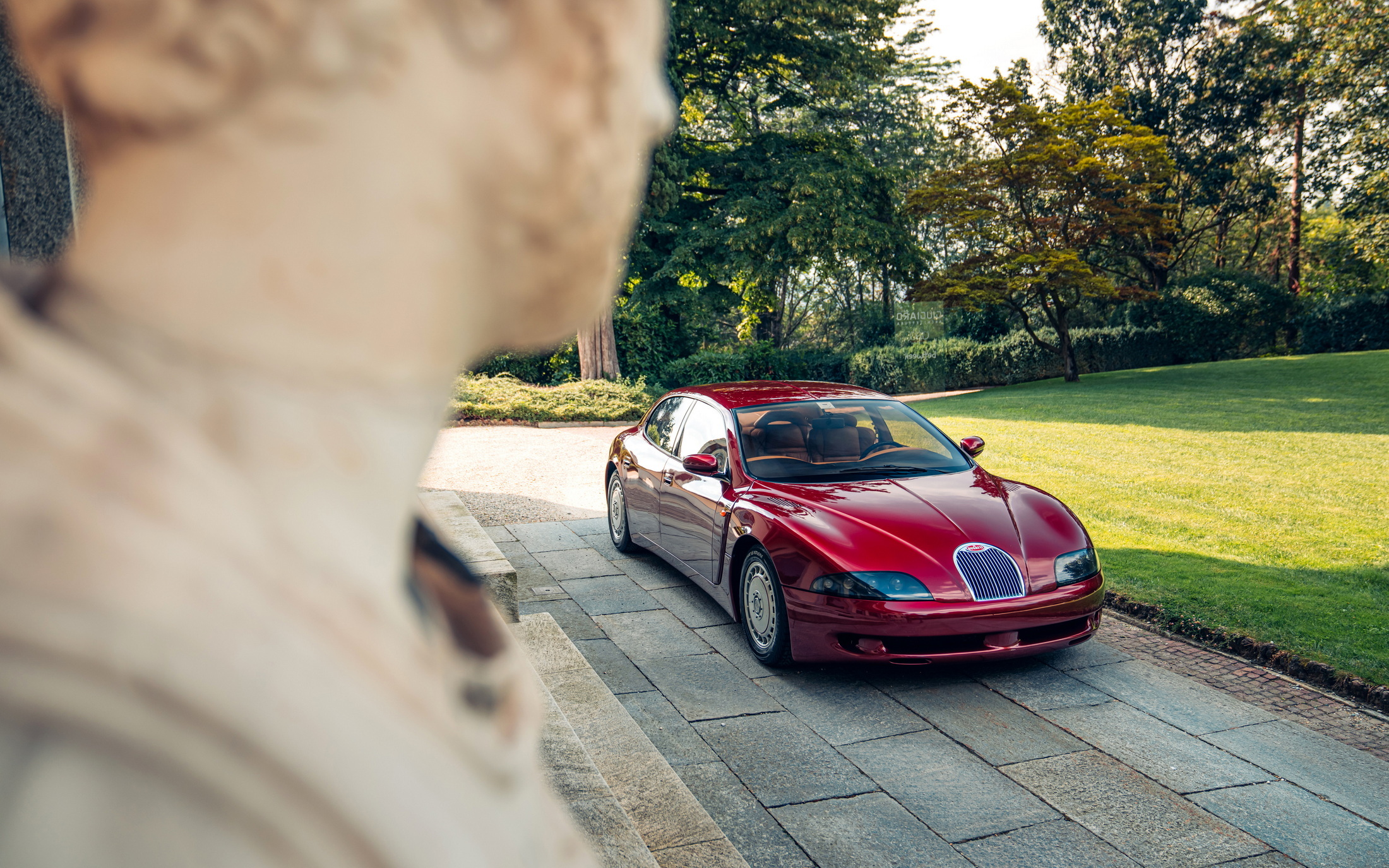Giorgetto Giugiaro, a man whose name stands in the automotive pantheon as one of the most legendary designers of all time spoke on his 85th birthday to Bugatti about one of his most advanced, but esoteric designs: the EB112.
This year, the sedan concept is also celebrating an anniversary. It has been 30 years since the avant-garde Bugatti first broke cover at the Geneva Motor Show in 1993. There, it received mixed reviews, as often happens with cars that are ahead of their time.
Despite being just an ultra-luxury sedan, the EB112 featured some of the most advanced supercar technology of its time, including a carbon fiber monocoque, aluminum body panels, a 6.0-liter V12 with five valves per cylinder, that made 450 hp (335 kW/456 PS) and powered all four wheels via a six-speed manual transmission.
Read: Bugatti Designer Achim Anscheidt Retires After 19 Years With Brand, Hands Over To Frank Heyl

Bugatti says that the EB112 was the precursor to the “form follows performance” philosophy that created the Veyron and the Chiron. Giugiaro adds that echoes of the highly aerodynamic shape can be seen all over the auto industry today.
“The EB112, in many respects, was a dream car and a forerunner to what we today know as high-performance fastback models,” he said. “It flawlessly combined design with technological and engineering features that were majorly ahead of its time.”
He adds that the car featured a number of “nostalgic” design cues, inspired by the Bugattis of the late 1930s. These include the horseshoe grille, and the dual rear windows with a central spine that was inspired by the Type 57 SC Atlantic, and was later used by the Veyron.
“The Bugatti EB112 was a true pioneer, an avant-gardist to how the saloon segment of the automotive world would radically change following its unveiling,” said Luigi Galli, Bugatti specialist for heritage and certification. “Before it, there really was no high-performance sedan that took on the attributes the EB112 delivered, forming visionary design with outstanding power and luxury in abundance.”
Although Bugatti fully intended to build the EB112, the company went bankrupt in 1995. Despite that, the parts for three unfinished cars were bought and built by Monaco Racing Team, making it an exceedingly rare car today.
Now that the company is looking forward to its next stage of life without the W16 engine, Bugatti says it will look at vehicles like the EB112 for inspiration.












